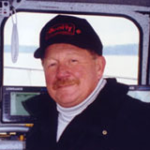Blackmouth Fishing the San Juans

Each week one of the Salmon University experts answers reader questions in our “Ask a Pro” feature. This week’s questions are answered by Tom Nelson. Submit your own question here.
Q: Where will Blackmouth fishing be most productive in the San Juan Islands this December? – Keith
A: Winter Blackmouth are spread throughout the San Juan Islands in December. They are heavy feeders so if you find the bait, you’ll find the fish. Salmon Bank at the southern end of San Juan Island always holds bait and salmon. However, be aware: it’s also very exposed to the weather and strong tide changes. Other good spots are Thatcher Pass and the Northwest corner of Orcas Island. The main thing is finding bait. You may want to go to our website here.
Q: Where is a good place for chum fishing in area 8.2? – Rudi
A: Almost anywhere in 8.2 can be good chum fishing. What you want to do before you even start fishing is find the schools of chum, and this is usually easy to do because the females will be seen jumping to loosen their eggs. Fish the top 60-feet of water, especially the top thirty. Concentrate your fishing in front of rivers and streams. Also, read our article on chum fishing here.
Q: I live in Port Angeles and am concerned about the low numbers and small size of fish this year. Are there any answers as to what is going on? – Chris
The Coho and the Chinook this year were not of the large sizes to which people have become accustomed. There are several reasons for this, but primarily it’s because hatchery fish have a history of coming back in fewer numbers and smaller sizes. Of course, hatchery fish also interact with the native fish and their gene pool tends to get smaller. When I was younger, some 50 years ago, the first person each season to catch a fish at Hope Island above 50 pounds was deemed to be King of Hope Island for the year. There hasn’t been a fish caught there that big for many, many years. Gillnets take the biggest fish out of the gene pool and, thus, in the long run, bigger fish are disappearing. The Elwah River, at one time, had many fish in the 50 and 60 pound range. One reason they were so big, is they had to travel up the swift waters of the Elwah River to get to their spawning grounds. Once they built the dam on the Elwah, those fish were caught and removed from the gene pool. In my opinion, if the fishery hadn’t been managed for commercial fishing only, we wouldn’t have needed hatcheries and you would still see the big fish.






